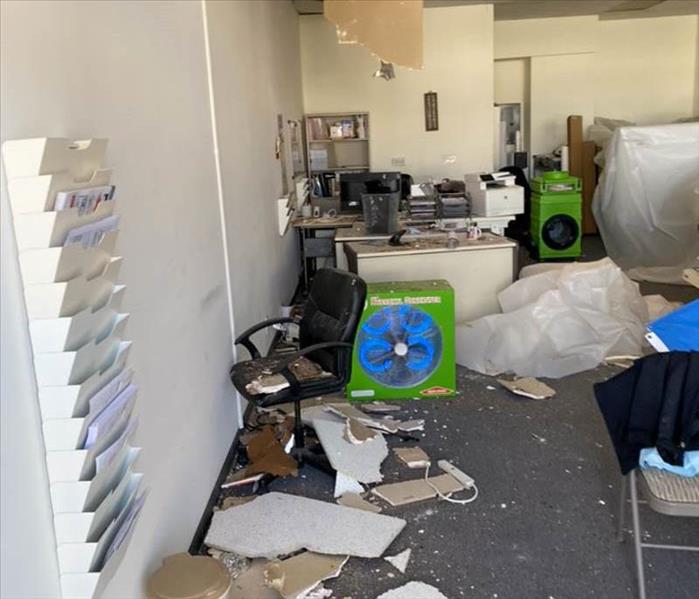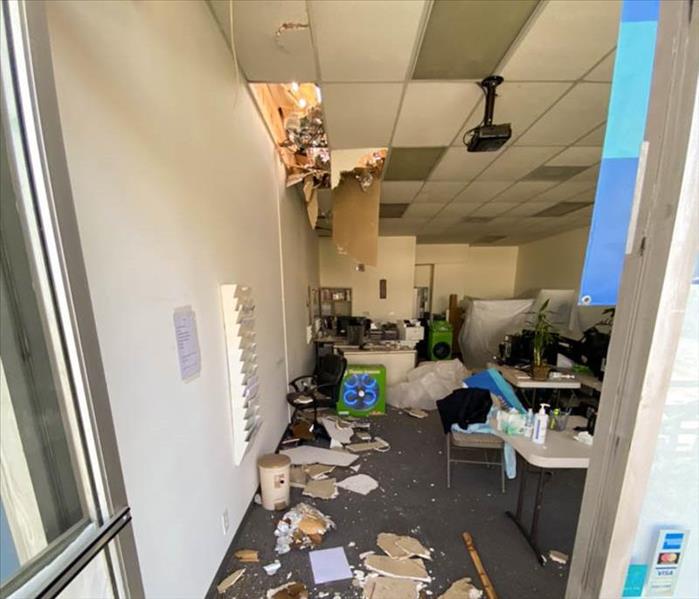
Step 4: Drying and Dehumidification
Our Water Damage Restoration Process
After the majority and bulk of the water is removed moisture still remains, in the walls, in the air, in the property. What's still needed is drying and dehumidification, and that's the next step in the process.
At this point in the process much is accomplished, the flooring and walls may even appear dry, but they're not. A quick inspection reveals that water's still there, moisture's present — things will still be wet to the touch. Other wet material may be hidden behind the wall and unnoticed. This hidden moisture is one of the more alarming aspects of the restoration process, wet material, hidden and out of sight. Fortunately, our team is equipped with advanced equipment to test moisture levels, identify damage and address as needed.
Our dehumidifiers will help prevent secondary damage to contents and our commercial grade air-movers will dry the walls and flooring material.
Drying / Dehumidification
Our Professionals will use room measurements, temperature, and relative humidity to determine the optimal number of air movers and dehumidifiers to dry your home or business. We’ll carefully monitor the progress using moisture meters until the materials return to acceptable drying goals.
- Use Dehumidification Equipment
- Use Monitoring Equipment to Track Progress
Monitor Floor and Walls
We check the moisture levels to monitor the drying process.
- Monitor Floors
- Monitor Walls
Drying Equipment
- Industrial-grade dehumidifiers help prevent secondary water damage like swelling and warping of floors, walls, and furniture.
- High-speed air movers create airflow across walls, carpets, pads, and furniture, which accelerates the evaporation of moisture.


 24/7 Emergency Service
24/7 Emergency Service




